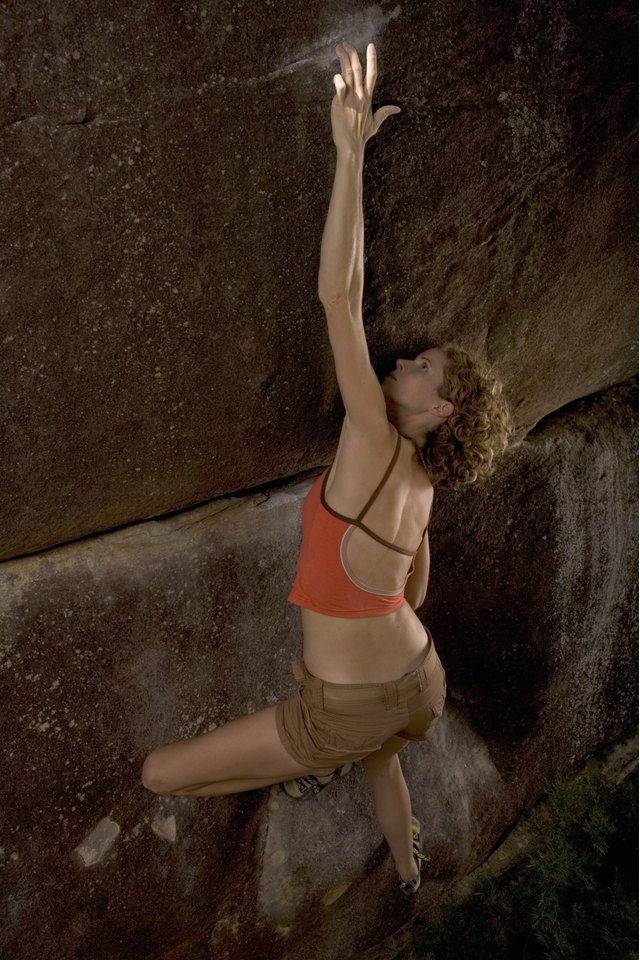Muscles Used in Bouldering

Topping out the world's most difficult boulder problems requires nearly superhuman power levels. Climbers genetically endowed with an abundance of fast-twitch muscle fibers tend to excel at bouldering for this reason. Talented boulderers regularly ascend steep rocks by performing explosive movements on mind-bogglingly minuscule holds. Even for beginners, this high-intensity activity works most major muscle groups for a body-weight strength-training session. Bouldering moves like dynos, deadpoints, slaps and mantles develop muscular strength, power and coordination.
Arms and Hands
From fingertips to shoulders, bouldering engages all of your hand and arm muscles. The bulk of the muscles that operate your hands and fingers lie in your forearms, as explained by BodyBuilding.com. Every bouldering move requiring you to hang on to holds works your fingers, hands and forearms. Biceps help you pull down on and lock off holds, while triceps do more work when you're pushing down or mantling to top out a boulder problem.
Upper Back and Shoulders
Boulderers usually have strong and powerful latissimus dorsi muscles -- commonly called lats. These large upper-body muscles do much of the work in one of bouldering's key motions, called adduction. As explained by ExRx.net, adduction involves contracting your upper arm, or moving it from above your head down toward your side. Bouldering movements regularly involve additional shoulder and upper back muscles, including your deltoids, infraspinatus, teres major and teres minor.
Core
Weak or imbalanced core muscles can directly contribute to a boulderer's inability to execute certain moves successfully. Core muscles include more than just your abdominal muscles. As noted by MayoClinic.com, core muscles also include the muscles of the lower back, hips and pelvic region. These muscle groups stabilize and support every movement you make. Incorporating hanging knee raises, deadlifts and supermans in a regular training plan can help improve your core strength for bouldering.
Lower Body
Bouldering consistently engages muscle groups in your feet, legs and buttocks, both to propel movements and to maintain body tension. Heel hooks isolate your hamstrings, while high steps work your buttocks, thighs and calves. Strong lower-body muscles also provide explosive launching power for dynamic bouldering moves. A dynoing boulderer literally jumps from one handhold to the next. Both feet come off the rock. The boulderer's feet, calves, thighs and buttocks all help generate this forceful motion.
References
Resources
Writer Bio
A professional writer since 1997, Harvard graduate and pro rock climber Alli Rainey's articles have appeared in "Climbing Magazine," "Rock & Ice" and "Men's Fitness," among many others. Rainey is also an ACTION certified personal trainer (CPT) and climbing coach.
